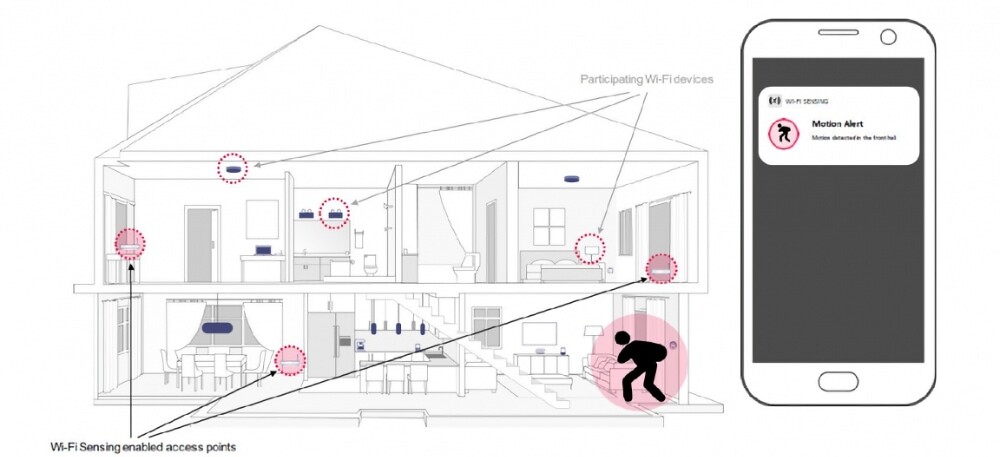New WiFi standard will feature Wi-Fi sensing that can detect movement and distance of users. Work is already underway on the WiFi standard that will arrive in 2024. Specifically in September three years from now, when the IEEE plans to approve the new 802.11bf Wi-Fi. This is an update that will expand the possibilities of WiFi, allowing not only to transmit the signal but also to take advantage of it to detect which people or objects are moving within its range of action.
Wi-Fi 802.11bf cannot be understood without the associated ‘Wi-Fi Sensing’ (SENS) technology. The first term is for the standard, whose main novelty is the introduction of this ability to turn WiFi devices into a kind of distance and movement sensors.
What is ‘Wi-Fi Sensing’

WiFi sensing is using differences in WiFi signal interference, SENS is a technology that is capable of measuring range, speed, direction, movement, presence, and proximity of people and objects. WiFi devices emit waves throughout the house to send and receive data, but these waves can also be used to identify some parameters of the objects with which these waves interact.
Through The Register we know the work of Francesco Restuccia, assistant professor of electricity and computer engineering at Northeastern University, who explains in an arXiV paper what role the new standard can play: “when it is finalized and introduced 802.11bf as an IEEE standard in September 2024, WiFi will no longer be a communication standard only and will legitimately become a full detection paradigm.”

The next expected standard is Wi-Fi 7, based on the IEEE 802.11be ‘Extremely High Throughput’ (EHT) standard and promising at least 30 Gbps at the access point and up to 48 Gbps. Its arrival is also expected in 2024. This Wi-Fi 802.11bf can be understood as a parallel standard, for those future WiFi devices that also activate SENS motion detection.
As described by the IEEE itself, the measurements obtained with the WLAN network will allow a whole series of new applications, both at the level of home security, entertainment and energy management and savings. It is not difficult to imagine, for example, that smart lights connected to the home WiFi can automatically turn off when they detect that no one is home or activate an alarm system when they detect a movement at home even though we are away.

Intel is one of the companies that has described the possibilities of ‘Wi-Fi Sensing’, explaining that it is based on analyzing the channel changes measured by amplitude and phase. This technology can be applied at different frequencies, from 2.4 GHz to 60 GHz, through 5 and 6 GHz.
The bands targeted by the IEEE are slightly different, explaining that the ‘Wi-Fi SENS’ will be between 1 GHz and 7.125 GHz (MAC / PHY interface) and above 45 GHz, which would fit with the 60 GHz named by Intel..
The 802.11bf standard will allow remote monitoring through WiFi devices without the need for dedicated sensors or cameras. Assuming 802.11bf Wi-Fi at 60 GHz, the IEEE envisions that it can be leveraged for gesture recognition in gaming applications, enhanced services, remote health monitoring, and more.
Questions about privacy
“In fact, SENS-based classifiers have been shown to infer privacy-critical information such as typing, gesture recognition and activity tracking,” the researchers explain. “Given the transmitting nature of the wireless channel, a malicious intruder could easily ‘eavesdrop’ on CSI [Channel Status Information] reports and track unauthorized user activity.”
Restuccia suggests that the new standard should have a system of optionality, so that it is the user who voluntarily decides to activate it. However, this ‘Wi-Fi SENS’ has an added complexity compared to other sensors or surveillance cameras. And it is that WiFi waves can penetrate the walls, so it could be used to invade the privacy of other people without them detecting it. A complexity that we already see in other technologies such as Bluetooth.
We will have to wait until 2024 to know the final details of a new WiFi standard that promises to simplify the configuration and automation in our home, but as almost whenever a new technology appears, it will also generate new debates and challenges.